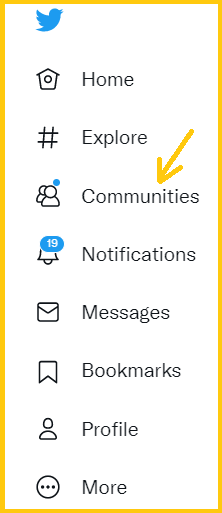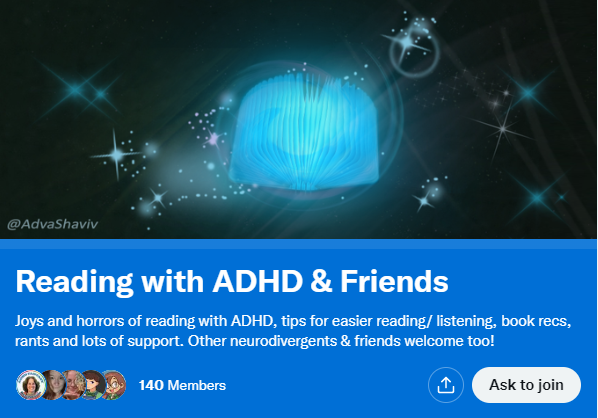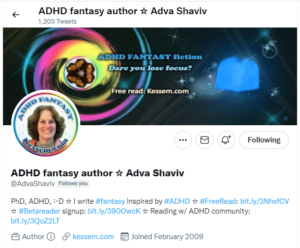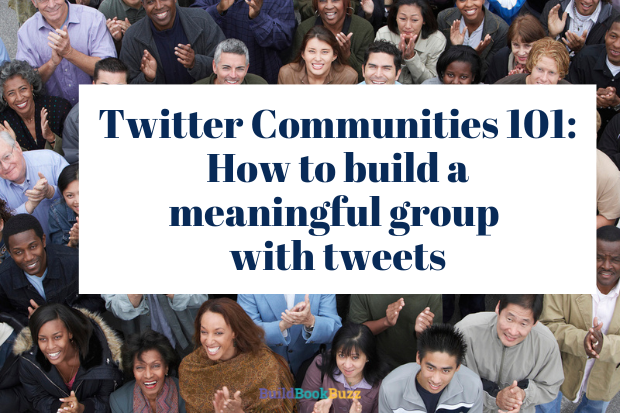Twitter Communities 101: How to build a meaningful group with tweets
What are Twitter Communities and what's their potential for authors? Here's what you need to know about this new way to connect with readers.
Writing can be a lonely profession.
So many of us work on books, articles, and other writing projects in isolation. We don’t have colleagues in the next office; we don’t live with people who understand what we do.
That’s why building (or finding) a community of like-minded authors and readers is essential to our ability to write and promote books that people want to read.
There are lots of ways we can do this online, but one that has me the most excited right now is Twitter Communities.
What are Twitter Communities?
Twitter created Twitter Communities “to give people a dedicated place to connect, share, and get closer to the discussions they care about most,” the company says.
They’re Twitter’s version of Facebook, LinkedIn, and forum groups. (Side note: Be sure to join my book marketing Facebook group.)
Think of a Twitter Community as a private meeting room in the back of a busy restaurant. People at each table in the main dining room are talking about something different from folks at other tables. But in your back room? Every person at every table is focused on the same topic.
Think of a Twitter Community as a private meeting room in the back of a busy restaurant. People at each table in the main dining room are talking about something different from folks at other tables. But in your back room? Every person at every table is focused on the same topic.Click to tweetThat topic is determined by the Community administrator – the Twitter user who created the Community.
How to find Twitter Communities

When it comes to finding Communities to join, there’s a serious Catch-22. You have to be a Community member to get the search option to find others. There are several ways to become a member:
- You’re invited to join a Community and accept the invitation.
- Look for a group to join in the official Twitter Communities profile by scrolling down on the page. (That’s what I did.)
- Find posts about Communities that might interest you by searching for relevant hashtags.
- You create a Community.
Once you’re a Community member – whether it’s yours or someone else’s – you’ll see a Communities tab in your Twitter account. Use that to search for other groups to join.
Get started with these links
I’ve compiled a few links here that will get you started with Communities.
- Before doing anything, read through “About Communities on Twitter” in the Help Center.
- Want to create one? Use the Communities interest form.
- Follow the Twitter Communities account, @HiCommunities, for tips and updates.
- Get ideas for Community content in this thread.
Join a Community to see how they work
Whenever I want to try something new, I study how others are doing it. You might want to do the same, even if you’ve already decided that your best option is to create your own.
To see how it’s done, I found a book-related Community to join, Book Twitter, in the official Twitter Communities account.
That added the “Communities” option to my side menu on desktop – see image above. I selected that, then used the search option to find more to join. That’s how I discovered and joined Gluten Free Cooking & Baking. (Yay!)

I’m now scrolling through both groups to see what people tweet in the group, how others respond, and so on. I’ve already noticed that people aren’t using hashtags in the gluten-free baking Community.
Case study: Author Adva Shaviv’s Twitter Community
Adva Shaviv, who writes fantasy inspired by ADHD, created Reading with ADHD & Friends about three weeks ago to form a community around a shared interest — reading with ADHD.
Her group’s description, “Joys and horrors of reading with ADHD, tips for easier reading/ listening, book recs, rants and lots of support. Other neurodivergents & friends welcome too!,” defines what members can expect.

“Forming a community around a shared interest, which is related to my book, gives me a much better chance to be heard, compared with tweeting or posting into the void with the hope to attract potential readers,” Adva says.
Like me, Adva believes that because Twitter Communities are a new option for like-minded people to connect, they’re more intriguing to Twitter users. She adds that they’re also operating in an environment that isn’t saturated in the way that Facebook and LinkedIn groups might be.
Making personal connections in Twitter Communities
Adva’s primary book marketing goal with her Twitter Community and elsewhere is to build her email list.

Right now, the only way she can do encourage people to subscribe is through the sign-up link in her Twitter profile . Even with that, group members need to check her profile to find it (and they do — Adva has gained 100 new followers, many of whom are Community members). At some point, it will make sense for her to add a tweet about her newsletter. But not yet.
Group growth is impressive. On average, six people are joining every day. Adva’s initial goal was 150 members in a month; within three weeks, she had 139.
What might count more than number of members, though, is engagement. She’s got it. Members like and comment on her tweets, post on their own, and invite friends to join. That last part is key — organic growth is the easiest way to expand group reach and impact.
“The connection with the members is personal, which is of course the very idea at the base of a community. When I finally have a book to offer, these will not be strangers I cold-deliver my message to, but people who know me and are interested in reading and in ADHD, a crucial element in my novel,” she says.
Tips for building your Twitter Community
Want to make sure your group thrives? Here are a few tips.
Focus on relationship-building, not promotion.
Some authors have a tendency to promote, promote, promote. (Ask me how I know.)
That won’t work.
This is about building a community around a topic related to your book, not building a community around your book.
Big difference, but some struggle with this concept.
“Self-promotion tends to do especially poorly on Twitter. Obviously, you can – and should – mention your writing in the community; after all, this is why you opened it. But make sure your mentions are relevant and add to the general discussion,” Adva says.
Plan on investing time, especially in the beginning.
Initially, finding and inviting members is a time-consuming process. It’s all about letting the right people know your group exists. You can do that by:
- Adding a link to the group in your Twitter profile.
- Tweeting about it with hashtags that will attract your audience.
- Reviewing your followers, one-by-one, to see who might be interested, then inviting them to join.
- Identifying Twitter users who share information about your topic and inviting them to join.
- Reviewing the followers of those Twitter users who tweet about your topic and inviting those who might seem interested based on their profiles and tweets.
- Sharing group information with an invitation to join in other social networks.
- Promoting membership to your newsletter subscribers.
You’ll also need to create relevant content and respond to tweets from others.
On the surface, this can look like yet another chore. But if you select the right focus for your group, one that you’re excited about, you’ll find that it’s more fun than work.
You’ll make new friends and learn a lot in the process, too.
Should you create a Twitter Community?
Here are a few questions to consider to help you decide if this is a good fit for you.
- Do the people you want to influence and engage with use Twitter?
- Do you understand Twitter and know how to use it?
- Is your group topic something you’re enthusiastic about — and one others are interested in, too?
- Do you have the time to build and support a Twitter Community?
If you answered “no” to most of these questions but are intrigued by the concept, consider exploring whether someone else has already built a group around the topic. Joining someone else’s Community might be a better fit instead.
The opportunities for learning and fun are only going to grow with Twitter Communities as more people start creating and contributing to these groups. Are you ready to benefit from conversations with others who share your passions?
Have you joined or started a Twitter Community? Tell us about it in a comment.
Like what you’re reading? Get it delivered to your inbox every week by subscribing to the free Build Book Buzz newsletter. You’ll also get my free “Top 5 Free Book Promotion Resources” cheat sheet immediately!


What an excellent article, Sandy, on this new opportunity for writers!
I’m sure many more writers will benefit from this knowledge as Twitter Communities become more widely known. Glad to have been able to help from my experience!
Adva
Adva, thanks SO much for sharing your experience with us. I’m sure it’s helpful to others. I hope your Twitter Community continues to thrive!
Sandy
Thank you, Sandra! I just started a Twitter Community on writers learning together and from each other, but I have not promoted it yet. I created it in response to so many emails I’ve gotten recently on how to make huge amounts of money–not by writing so much, but by hosting summits. I learned so much more from commenters than what was presented, and the price for learning about how to set up these summits was out of reach for so many people anyway.